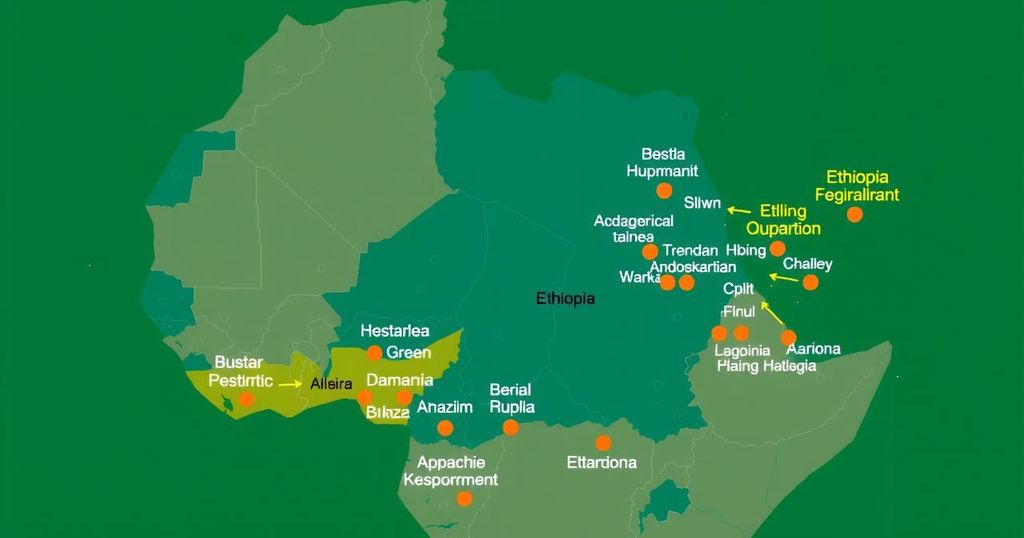Ethiopia transitioned from imperial rule under Haile Selassie I to a federal republic, marked by a constitution emphasizing ethnic self-determination. The current political structure features a strong prime minister, a bicameral legislature, and ethnically defined local governance. Despite these frameworks, representation remains unequal, particularly for women, amidst a shifting political landscape including the rise of the Prosperity Party. The Ethiopian National Defense Forces also play a significant role in regional security and international peacekeeping efforts.
Ethiopia has undergone profound transformations in governance since the late 19th century. The imperial reign of Haile Selassie I from 1930 to 1974 introduced a semblance of parliamentary democracy; however, real power remained with the emperor. Following a military coup in 1974, the Derg established a Soviet-style regime, leading to widespread changes, including the adoption of a temporary constitution and eventually the Federal Democratic Republic of Ethiopia in 1994. This new constitution emphasized ethnic federalism and granted considerable autonomy to various ethnic groups, allowing for self-determination, including secession. Under the current constitution, Ethiopia’s government functions as a republic with a strong prime minister. The legislature consists of a bicameral system, with directly elected representatives, ensuring certain rights for underrepresented groups. Local governance is structured around ethnically delineated regions known as kililoch, including prominent ethnic groups such as the Amhara and Oromo. Despite these democratic structures, actual political representation often diverges from these principles, particularly regarding women’s roles, signaling ongoing challenges in achieving true equity and representation. The Ethiopian National Defense Forces (ENDF) stand as one of Africa’s largest militaries, involved in various international peacekeeping missions. The current political landscape has transitioned from the EPRDF coalition to the Prosperity Party, which has redefined party dynamics within the nation. As Ethiopia continues to navigate complex ethnic and political landscapes, these foundational changes set the stage for its future governance and national unity.
The history of Ethiopia’s governance reflects a tapestry of power struggles and evolving political frameworks. The emergence of a modern Ethiopia began in the mid-19th century, leading to the reign of Emperor Haile Selassie I, who implemented governance reforms while maintaining imperial authority. The subsequent military regime under the Derg marked a significant pivot towards a more authoritarian, centralized structure. The 1994 constitution, a response to ethnic tensions, established a federalist system that grants ethnic groups the right to self-determination, showcasing a unique but complex approach to governance in a diverse nation. With the delineation of regional states and continued efforts to address ethnic identities, Ethiopia’s governance structures reflect both historical influences and contemporary challenges.
In conclusion, Ethiopia’s political evolution reveals a complex interplay between historical governance models and modern federalism. The 1994 constitution marked a critical shift towards ethnic autonomy, yet the practical application of these principles remains inconsistent. The transition from the EPRDF to the Prosperity Party illustrates the dynamic nature of Ethiopian politics, while ongoing issues regarding representation and gender equity highlight areas requiring further development. Ethiopia’s path forward hinges on balancing ethnic identities with national unity in an increasingly intricate political landscape.
Original Source: www.britannica.com






